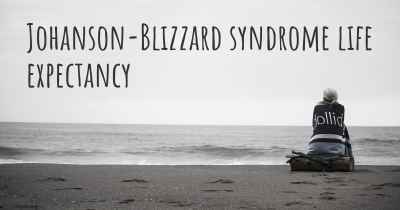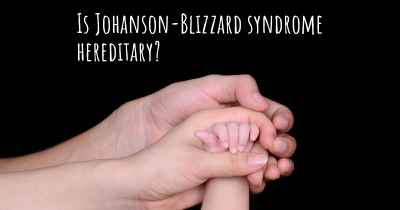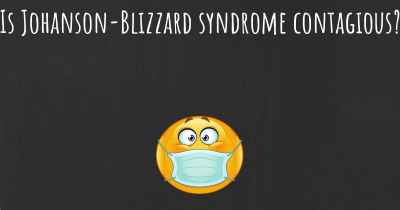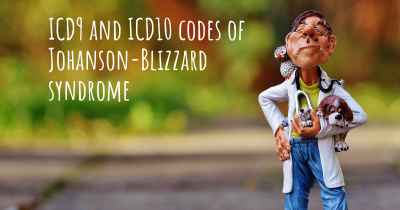Which are the causes of Johanson-Blizzard syndrome?
See some of the causes of Johanson-Blizzard syndrome according to people who have experience in Johanson-Blizzard syndrome
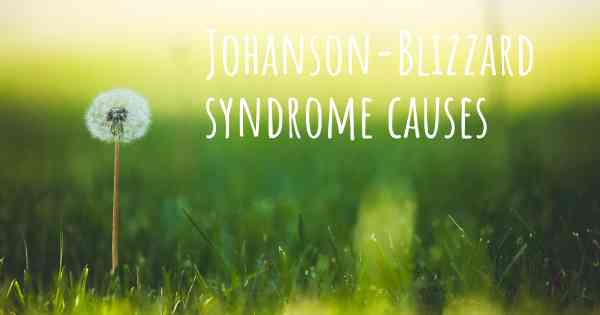
Johanson-Blizzard syndrome is a rare genetic disorder that affects multiple systems in the body. It is characterized by a variety of physical abnormalities and developmental delays. The syndrome was first described by Swedish pediatrician Per-Olof Johanson and American pediatrician Robert Blizzard in the 1970s. Although the exact prevalence of Johanson-Blizzard syndrome is unknown, it is estimated to occur in approximately 1 in 500,000 to 1 million births.
The causes of Johanson-Blizzard syndrome are primarily genetic in nature. The syndrome is inherited in an autosomal recessive manner, which means that both parents must carry a copy of the mutated gene for their child to be affected. The specific gene associated with Johanson-Blizzard syndrome is called the UBR1 gene, located on chromosome 15. Mutations in this gene disrupt the normal functioning of the body, leading to the characteristic features of the syndrome.
UBR1 gene mutations are responsible for the majority of cases of Johanson-Blizzard syndrome. These mutations can occur spontaneously or be inherited from carrier parents. When both parents carry a single copy of the mutated gene, there is a 25% chance with each pregnancy that their child will inherit two copies of the mutated gene and be affected by the syndrome.
The UBR1 gene provides instructions for producing a protein called ubiquitin protein ligase E3 component n-recognin 1 (UBR1). This protein plays a crucial role in the degradation and recycling of other proteins within cells. It helps regulate the levels of various proteins by marking them for degradation when they are no longer needed. Mutations in the UBR1 gene impair the function of the UBR1 protein, leading to an accumulation of proteins that should be degraded.
The accumulation of proteins due to UBR1 gene mutations disrupts normal cellular processes and leads to the characteristic features of Johanson-Blizzard syndrome. One of the most prominent features is pancreatic insufficiency, which means that the pancreas does not produce enough digestive enzymes. This results in poor absorption of nutrients from food and can lead to malnutrition and failure to thrive.
Other common features of Johanson-Blizzard syndrome include abnormalities of the nose and ears. Individuals with the syndrome may have a small or absent nose, as well as malformed or low-set ears. They may also have abnormalities of the scalp and hair, such as sparse or absent scalp hair, and abnormal or missing eyebrows and eyelashes.
Developmental delays are another hallmark of Johanson-Blizzard syndrome. Affected individuals may experience delays in reaching developmental milestones, such as sitting, crawling, and walking. Intellectual disability is also common, although the severity can vary widely among individuals.
Additional features of Johanson-Blizzard syndrome can include heart defects, hearing loss, genitourinary abnormalities, and skeletal abnormalities. These can range from mild to severe and may require medical intervention or surgical correction.
Diagnosing Johanson-Blizzard syndrome is often based on clinical features and physical examination findings. Genetic testing can confirm the diagnosis by identifying mutations in the UBR1 gene. Prenatal testing is also available for families with a known history of the syndrome or carrier status.
Management of Johanson-Blizzard syndrome is focused on addressing the specific symptoms and complications associated with the disorder. This may involve a multidisciplinary approach, including medical specialists such as gastroenterologists, endocrinologists, cardiologists, and developmental pediatricians. Treatment may include pancreatic enzyme replacement therapy, nutritional support, hearing aids, and surgical interventions as needed.
In conclusion, Johanson-Blizzard syndrome is a rare genetic disorder caused by mutations in the UBR1 gene. These mutations disrupt normal cellular processes, leading to a variety of physical abnormalities and developmental delays. Early diagnosis and appropriate management can help improve the quality of life for individuals with Johanson-Blizzard syndrome and their families.
